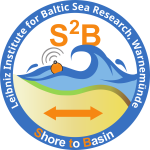
Current projects
DFG Research Training Group Baltic TRANSCOAST
CofiEs: Coastal filter function under Environmental stress
Moorklimaschutz: Model project for climate protection through peatland restoration
S2B-Shallow Water Processes and Transitions to the Baltic Scale Workpackage 3 - Benthic-pelagic coupling

The DFG Research Training Group "Baltic TRANSCOAST" – understanding the coastal ecocline
2nd Phase, DFG 06/2020-12/2024
Baltic TRANSCOAST follows a comprehensive and innovative qualification plan to offer early stage researchers an excellent education in several fields in the marine and terrestrial sciences, advised by leading scientists. The PhD students will gain wide and inter-disciplinary expertise in coastal research.
Baltic TRANSCOAST investigates the hydrodynamic, (bio)geochemical and biological processes at the interface between land and sea. Globally, coastal zones are the regions that are most transformed and used by man. A fundamental understanding of flat coastal areas, which are characterised by intensive interactions between land and sea, is essential for developing sustainable management strategies.
Baltic TRANSCOAST addresses, in interdisciplinary research topics, the water and matter fluxes in and between a coastal peatland and the adjacent shallow sea as well as the interactions with the biota. Rostock as a research location is well suited for inter-disciplinary research because biologists, chemists, physicists and environmental scientists of three faculties of the University of Rostock as well as of the Leibniz institute for Baltic Sea Research Warnemünde (IOW) are working closely together.
Contact: Dr. Maren Voß
CofiEs: Coastal filter function under Environmental stress
Björn Carlson Stiftung 02/2023-01/2026
Coastal areas worldwide are under high utilization pressure and are additionally threatened by climate change (storms, high temperatures, lack of oxygen). This leads to strong changes of the entire habitat including the metabolism. Therefore, a comprehensive and in-depth understanding of microbial processes is urgently needed, especially in shallow waters. However, investigations in shallow waters are extremely difficult due to the high dynamics and strong wave impact and require close cooperation across disciplinary boundaries which is to be realized within the framework of a long-term initiative at the IOW. How microbial processes of the nitrogen cycle are influenced by water-sediment interactions, or benthic colonization, will be investigated in this project. Rate measurements in the field, use of landers and laboratory experiments are planned. The goal is to quantify microbial processes and their interaction with near-bottom currents to better understand the coastal filter.
Contact: Dr. Maren Voß
Moorklimaschutz an der Ostseeküste
Model project for climate protection through peatland restoration TP 1: Reduction of nitrogen emissions from coastal peatlands
BfN-Bundesamt für Naturschutz (15.03.2024 - 14.03.2034)
The Baltic Sea coast of Mecklenburg-Vorpommern is characterized by numerous former coastal fens along its bays, inlets and estuaries. The originally approx. 40.000 hectares of coastal flooded peatlands are now mostly diked and drained. Restoration or renaturation has only been successful in individual cases, with the result that the condition of more than 60% of these fens is still deteriorating. As part of the project, predominantly agriculturally used peatland areas in 12 coastal polders are to be restored. This could reduce climate- damaging emissions by 15.000 - 24.500 tons of CO2 eq. per year on the planned total area of 850 hectares. Near mean water level, where the altitude allows, the sink function of the areas as carbon reservoirs is to be restored through the re-establishment of peat-forming plants. In addition to the climate protection effect, important ecosystem services such as peatland growth, flood protection, nutrient retention, groundwater enrichment and biodiversity growth are achieved or initiated. As part of the IOW's accompanying scientific research, nitrogen emissions and turnover are systematically recorded and quantified at selected sites. For this purpose, nutrient concentrations and denitrification rates in the soil are determined. The intersection of the rate measurements with other environmental variables will provide information on the regulation of processes in the various polders in close cooperation with the Baltic Sea Foundation and the University of Greifswald. At the end of the project, comparative multi-year observations will allow statements to be made about the real emission reductions through rewetting on coastal fens, and open up different strategies for peatland restoration and their climate impact.
Kontakt: Dr. Maren Voß
S2B - Shallow Water Processes and Transitions to the Baltic Scale

Workpackage 3 - Benthic-pelagic coupling
The dynamic energy in shallow waters has been described above and the pronounced role for biogeochemical processes as well as sediment water coupling. The structure of the seabed is as important for biogeochemical processes as is the type of sediments. Sediments are a diverse habitat in their own right, strongly determined by their meio- and macrofauna colonization. Furthermore, they are sites of intense degradation and other microbial processes interacting with physical and sedimentological processes. When bedforms with sediment ripples exist, the water flow above the sediments creates pressure gradients that entrain nutrients and organic matter, supporting microbial processes in the porewaters (Figure). However, as soon as the bedform ripples start migrating the porewater flows may be reversed and oxygen penetration is even reduced. Nutrient cycling in cohesive vs sandy sediments revealed a high and not yet understood complexity in the many variables impacting the diversity of fauna.
Contact: Dr. Maren Voß